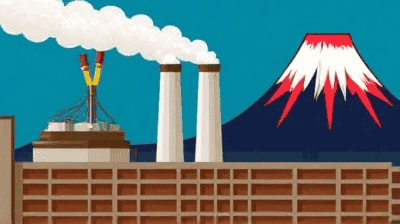
In a world grappling with climate change and environmental degradation, international treaties aimed at global cooperation are more important than ever. One of the most successful environmental agreements to date is the Montreal Protocol, which was established in 1987 to address the depletion of the ozone layer caused by chlorofluorocarbons (CFCs) and other ozone-depleting substances (ODS). While its primary focus was on the protection of the ozone layer, the Montreal Protocol also had an unanticipated yet profound side effect: it has significantly contributed to slowing global warming.
The Montreal Protocol was born out of growing scientific evidence that CFCs and other ODS were damaging the stratospheric ozone layer, which protects life on Earth from harmful ultraviolet (UV) radiation. The depletion of the ozone layer increased the risk of skin cancer, cataracts, and other health problems, as well as harm to ecosystems and biodiversity.
The primary objectives of the Montreal Protocol are:
Phasing Out Ozone-Depleting Substances: The Protocol set clear targets for reducing and eventually eliminating the production and consumption of CFCs and other ODS.
Supporting Developing Nations: Recognizing that developing countries might struggle to comply with the Protocol, the agreement included provisions for financial and technical assistance.
Monitoring and Reporting: Countries are required to report on their progress in phasing out ODS and to adjust their commitments as necessary.
The Montreal Protocol has witnessed remarkable success since its inception. Key achievements include:
Global Participation: As of now, the Protocol has been ratified by almost every country on the planet, making it one of the most universally accepted agreements in history.
Reduction of ODS: According to the United Nations Environment Programme (UNEP), the production and consumption of ODS have been reduced by over 98% since the Protocol was adopted.
Ozone Layer Recovery: Current scientific assessments indicate that the ozone layer is on track to recover by the middle of the 21st century, thanks to the measures implemented under the Protocol.

While the primary goal of the Montreal Protocol was to protect the ozone layer, it indirectly addressed global warming by targeting substances that not only deplete ozone but also contribute to the greenhouse effect. Many of the compounds regulated under the Protocol are potent greenhouse gases. CFCs, for instance, have a global warming potential (GWP) thousands of times greater than carbon dioxide.
The successful prohibition of these substances means:
Reduced Greenhouse Gas Emissions: By curbing the use of CFCs and similar chemicals, the Montreal Protocol has greatly reduced the amount of potent greenhouse gases entering the atmosphere.
Mitigation of Climate Change: Studies have shown that the measures taken under the Montreal Protocol are equivalent to preventing the release of several gigatons of carbon dioxide, which has considerably slowed the pace of global warming.
Research has estimated that the actions taken under the Montreal Protocol have led to significant reductions in global warming. Some key findings include:
Temperature Impact: According to a 2018 study published in the journal "Nature," the Montreal Protocol has helped avoid an increase in global temperatures of approximately 0.5 degrees Celsius.
Climate Benefits of CFC Reduction: Estimates suggest that the global phasedown of CFCs has a climate benefit equivalent to reducing CO2 emissions by roughly 135 billion metric tons.
The Montreal Protocol serves as a model for how targeted environmental policies can yield multiple benefits. Its framework provides a number of important lessons for addressing other global challenges, including climate change.
The success of the Montreal Protocol demonstrates that effective environmental governance requires a collaborative approach among nations. The treaty's establishment involved extensive negotiation, scientific collaboration, and consensus-building, all of which are essential in achieving a common goal.
The Protocol was grounded in rigorous scientific research that highlighted the dangers posed by ODS. Ongoing scientific assessments have played a crucial role in guiding policy decisions, enabling countries to adapt their commitments based on the latest findings.
The Protocol's design allows for adjustments in response to changing scientific knowledge and economic contexts. This adaptability has been critical in maintaining support and compliance from participating nations.
Recognizing the disparities between developed and developing nations, the Protocol includes mechanisms for financial assistance, such as the Multilateral Fund. This support has been vital in enabling all countries to participate and comply.
Public support and awareness significantly contributed to the success of the Montreal Protocol. Advocacy efforts highlighted the seriousness of ozone depletion and the importance of collective action, helping to mobilize public opinion in favor of the treaty.

The successes of the Montreal Protocol have led to its integration into broader climate governance frameworks. The 2016 Kigali Amendment to the Protocol, which aims to phase down hydrofluorocarbons (HFCs), exemplifies this integration. HFCs, which are commonly used as refrigerants, have high GWP and contribute to global warming. The Kigali Amendment builds on the existing structure of the Montreal Protocol while also acknowledging the need to combat climate change.
The experience gained from implementing the Montreal Protocol can inform climate-resilient policies in various sectors. For example, the transition to more sustainable and environmentally friendly alternatives to ODS has paved the way for innovation in refrigeration, air conditioning, and foam-blowing sectors.
The legacy of the Montreal Protocol has bolstered global climate negotiations. Its success has shown that international cooperation can yield concrete results, encouraging countries to engage more vigorously in initiatives aimed at reducing greenhouse gas emissions.
While significant progress has been made, a few ozone-depleting substances are still in use. Continuous monitoring, reporting, and enforcement are necessary to ensure that these substances do not undermine the hard-won gains achieved under the Montreal Protocol.
As emerging economies grow, they face the dual challenge of development and environmental protection. Engaging these nations in sustainable practices while ensuring that they have access to technology and resources is critical for achieving global climate goals.
In the context of climate change, it is essential to recognize that the Montreal Protocol alone cannot solve the crisis. Complementary policies and international agreements focused on reducing carbon dioxide and other greenhouse gases must be developed, leveraging the lessons learned from the Protocol's implementation.

The Montreal Protocol stands as a testament to what can be achieved when nations come together to address a pressing global issue. Its unexpected benefit of slowing global warming underscores the interconnectedness of environmental challenges and the importance of adopting a holistic approach to policy-making. Through international cooperation, science-based decision-making, and adaptive governance, the Montreal Protocol not only protected the ozone layer but also contributed to climate change mitigation. As we face the complex challenges of climate change today, the lessons of the Montreal Protocol remind us that effective governance and collaboration can yield transformative results for the planet.